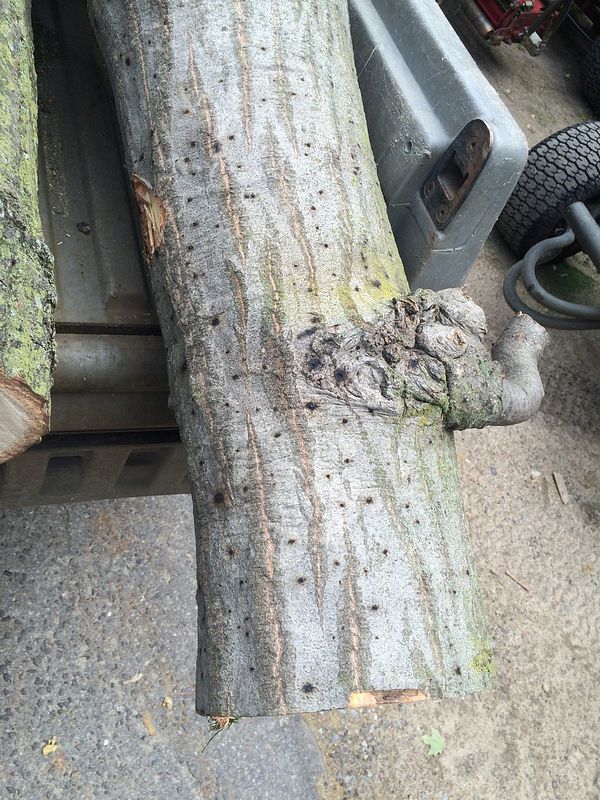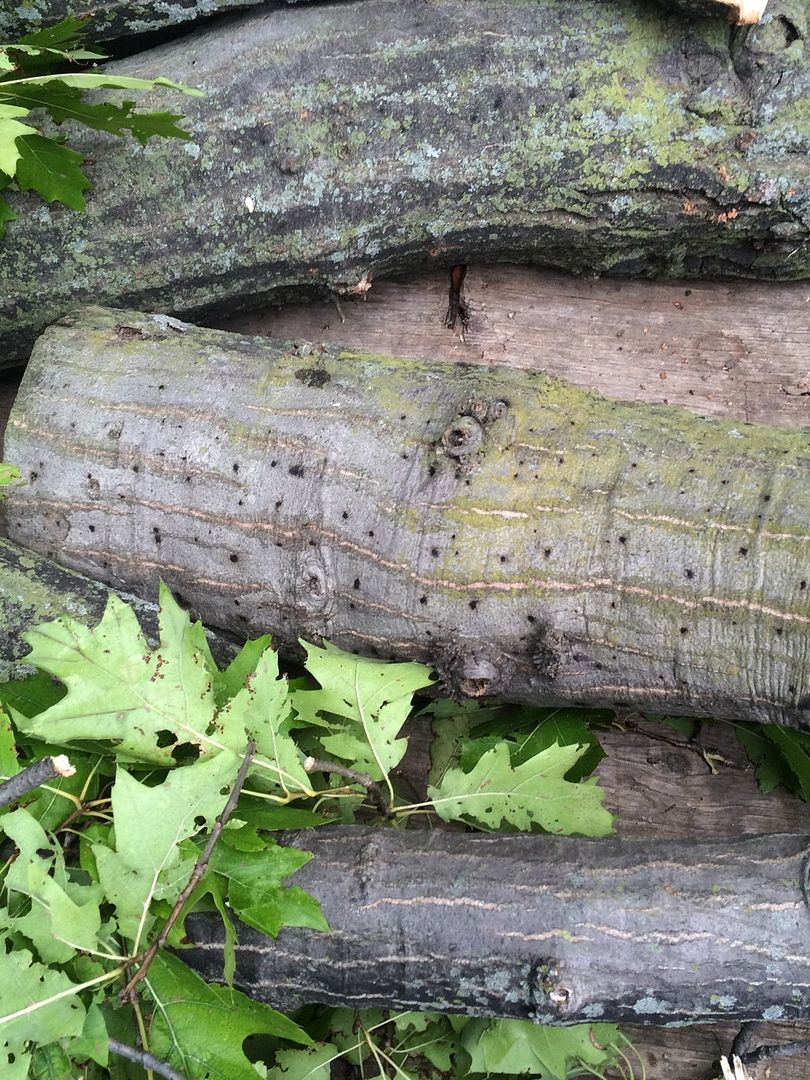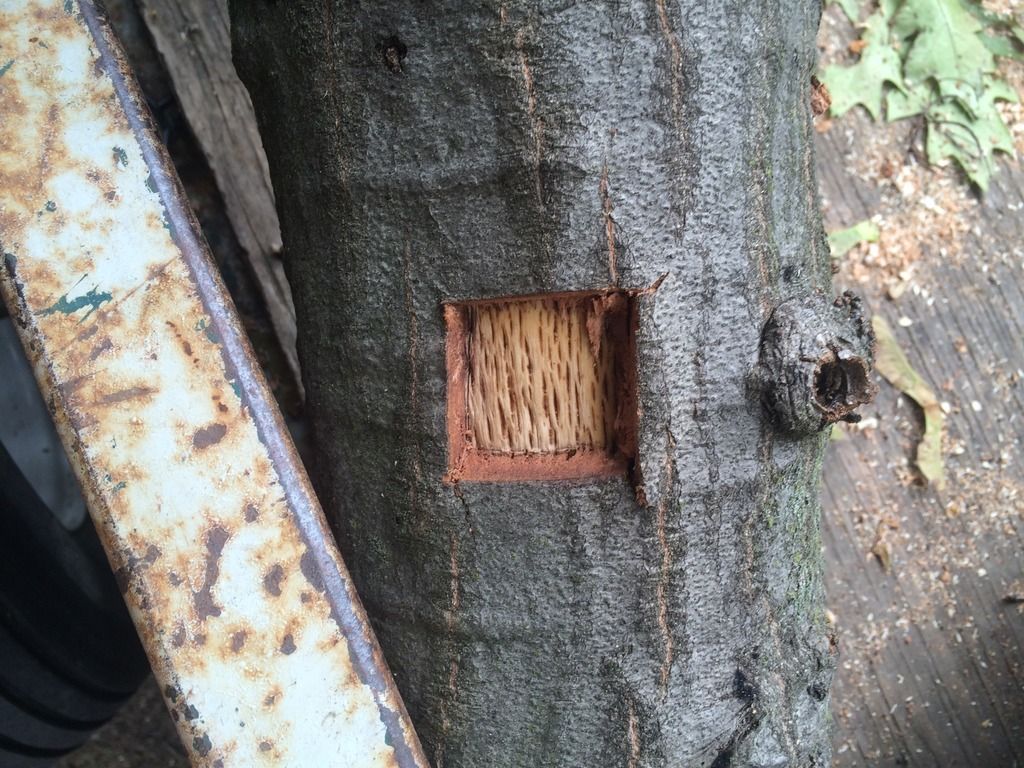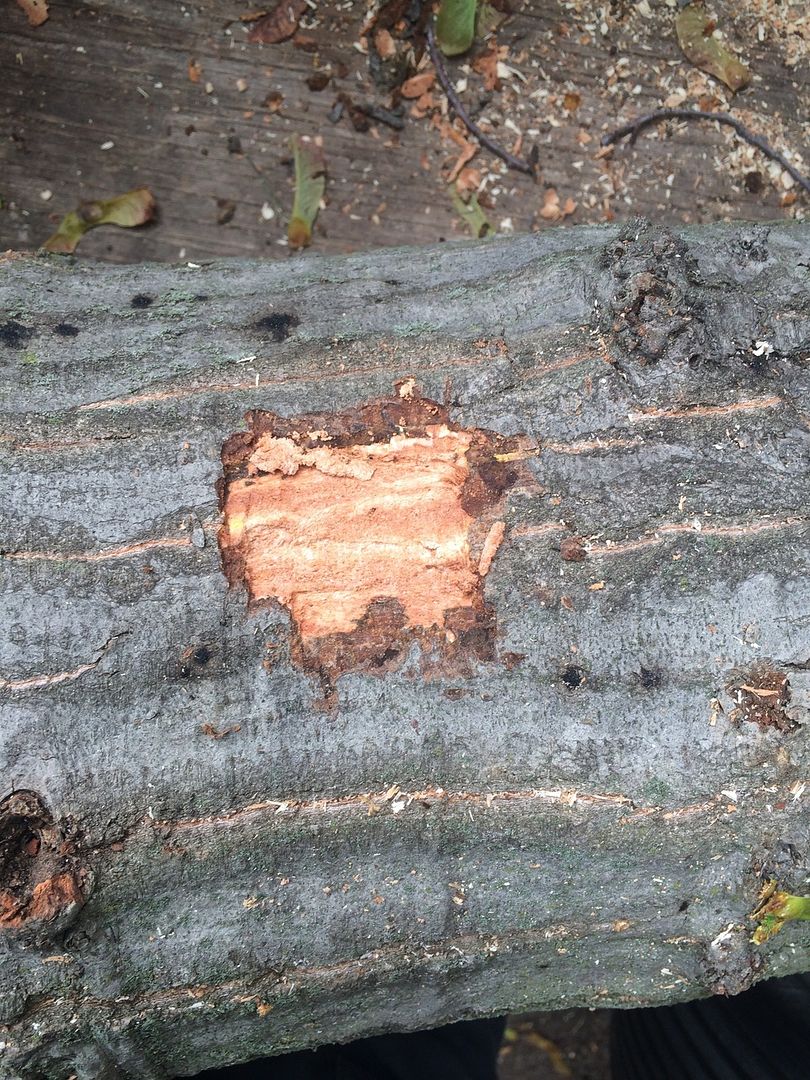You are using an out of date browser. It may not display this or other websites correctly.
You should upgrade or use an alternative browser.
You should upgrade or use an alternative browser.
Oozing spots on Red Oak
- Thread starter Golf
- Start date

Help Support Arborist Forum:
This site may earn a commission from merchant affiliate
links, including eBay, Amazon, and others.
Scrape some of the bark and post pictures of that too.
Any chance that has been shot with a shotgun?
Any chance that has been shot with a shotgun?
Carburetorless
ArboristSite Guru
The Yellow Bellied Sap Sucker.
I can't see defined holes.The Yellow Bellied Sap Sucker.
No, definitely not shot with a shotgun. This is a large red oak, about 42" in dbh. It is focal point and located in a high visible area.Scrape some of the bark and post pictures of that too.
Any chance that has been shot with a shotgun?
Very nice, this symptom haunted me many years ago. I'm not one to let an arborcultural mystery just pass by. For months I researched those same black spots on an oak I had found. No information anywhere to help with an solid ID. I came to my own conclusion that what I was looking at was small pustules of dried slime flux that had oozed from a drought stressed tree. Please if someone knows for certain, chime in. I'm all ears!
Carburetorless
ArboristSite Guru
Very nice, this symptom haunted me many years ago. I'm not one to let an arborcultural mystery just pass by. For months I researched those same black spots on an oak I had found. No information anywhere to help with an solid ID. I came to my own conclusion that what I was looking at was small pustules of dried slime flux that had oozed from a drought stressed tree. Please if someone knows for certain, chime in. I'm all ears!
Pustules of dried Slime Flux?! Oh no, not that!!! Do you know what this means???! It means that the Yellow Bellied Sap Sucker likes Slime Flux(whatever that is).
Doesn't look like sap sucker to me. They leave straight lines on the upright portion of the trunk. Could be bird peck, just don't think it is sap sucker.
Hopefully the report will conclude something other than sooty mold.
Carburetorless
ArboristSite Guru
I've seen that on an Oak before, thought it was normal for them. I couldn't agree with myself 100% that it was the YBSS. Maybe something the tree is trying to get ride of, maybe high mineral content; did any of the cuts turn blackish blue when you cut them?
Google turned up this...heerrrmmm
Bacterial Wetwood
Also called slime flux, wetwood is a bacterial disease that is common in poplar and elm trees, but which can also affect maples, magnolias and oaks. Trees affected by wetwood develop stained areas on the wood, which ooze fluid that has built up underneath the bark. Other symptoms include branch dieback and foliage wilt. Small infections can be controlled by opening the wounds, exposing them to air and preventing fluids from building up underneath the bark. No chemical control is available to treat wetwood.
Google turned up this...heerrrmmm
Bacterial Wetwood
Also called slime flux, wetwood is a bacterial disease that is common in poplar and elm trees, but which can also affect maples, magnolias and oaks. Trees affected by wetwood develop stained areas on the wood, which ooze fluid that has built up underneath the bark. Other symptoms include branch dieback and foliage wilt. Small infections can be controlled by opening the wounds, exposing them to air and preventing fluids from building up underneath the bark. No chemical control is available to treat wetwood.
When I first saw the holes, I thought Ambrosia beetle. You said there was no galleries in the cambium, how about in the sapwood?
That is not sap sucker damagePustules of dried Slime Flux?! Oh no, not that!!! Do you know what this means???! It means that the Yellow Bellied Sap Sucker likes Slime Flux(whatever that is).
There is no galleries in the wood either.When I first saw the holes, I thought Ambrosia beetle. You said there was no galleries in the cambium, how about in the sapwood?
Carburetorless
ArboristSite Guru
That is not sap sucker damage
Yea, the Sap Suckers don't leave much slime flux.
A few thoughts to ponder while we wait for the much anticipated lab report.
- Zero evidence of insect activity.
- Spots manifest only on compression side of limbs.
- Dept of staining limited to cuticle, doesn't penetrate to epidermis.
- Symptoms appear abiotic (uniform pattern).
My hypotheses is internal anaerobic fermentation due to chronic stress. Internal pressure released through the lenticals forming the sooty mold flux pustules.
On a side note, oak in question was monitored for over a year the oddity didn't reappear. Was hoping to find active oozing.
Not intending to hijack the OP's thread.
- Zero evidence of insect activity.
- Spots manifest only on compression side of limbs.
- Dept of staining limited to cuticle, doesn't penetrate to epidermis.
- Symptoms appear abiotic (uniform pattern).
My hypotheses is internal anaerobic fermentation due to chronic stress. Internal pressure released through the lenticals forming the sooty mold flux pustules.
On a side note, oak in question was monitored for over a year the oddity didn't reappear. Was hoping to find active oozing.
Not intending to hijack the OP's thread.
Carburetorless
ArboristSite Guru
Compression side of limbs; would that be the underside? May be when insects spawned.
Okay, We got the lab report back and they did not find any pathogen present on this oak and sample. However, we had a consultant coming in to look at it and gave us his thoughts. He looked at this oak and few others in proximity and noticed that one of the other oaks exhibiting a lighter color foliage in the central leader, to a point of chlorotic. There is also dieback present. He looked around it and found an oozing spot at the root flare. He suggested that we take a sample at that location and send it in to the lab again. He is certain that the lab will find a pathogen this time. I am sending in another sample and will keep everyone posted.
No hijacking at all. This is good info here. It correlates very well to the consultant's diagnosis. ThanksA few thoughts to ponder while we wait for the much anticipated lab report.
- Zero evidence of insect activity.
- Spots manifest only on compression side of limbs.
- Dept of staining limited to cuticle, doesn't penetrate to epidermis.
- Symptoms appear abiotic (uniform pattern).
My hypotheses is internal anaerobic fermentation due to chronic stress. Internal pressure released through the lenticals forming the sooty mold flux pustules.
On a side note, oak in question was monitored for over a year the oddity didn't reappear. Was hoping to find active oozing.
Not intending to hijack the OP's thread.
Similar threads
- Replies
- 17
- Views
- 589
- Replies
- 24
- Views
- 2K
- Replies
- 2
- Views
- 401
- Replies
- 0
- Views
- 269







